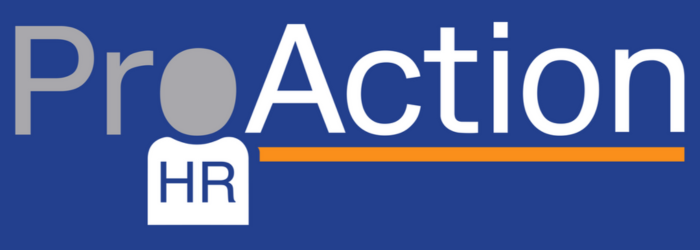The success of the Ulrich Model and it's suitability for today’s SME community
Martin Nicholson, our MD, looks at how this model was used to transform HR functions previously and explores whether it is fit for purpose for the SME marketplace of today.
Way back in the 1990s when I first studied for my professional qualifications, the concept of the Ulrich model was a common thread amongst all HR (and Personnel Professionals!). It was a concept that became regularly used and drove many to use the original version to transform their HR functions in the late 1990s and 2000s.
More than 20 years later and times have changed, and I’ve been considering whether the Ulrich Model is still as relevant and influential today as it used to be. In the past 20 years, we have seen an increased investment into HR Shared Service operations with employee self-service, HR information systems and centres of expertise becoming more and more common. The title of HR Business Partner has become synonymous with any progressive HR model - yet when you dig deep into the duties and behaviours required in this re-badge it is rare that the role is anything more than HR generalist activity.
The Need for HR in an SME Business
At the start of 2020, SMEs accounted for 99.9% of the business population, three-fifths of the employment and around half of the turnover in the UK private sector*.
Not unsurprisingly, the growth of micro and small companies flatlined in 2020. There were 1.16 million micro-companies with 1-9 employees and more than 211,000 small companies with 10-49 employees, so virtually unchanged from 2019**.
However, despite the impact of Covid, single-person companies continued to grow strongly and self-employment has skyrocketed by 93.9% since 2000 when there were 2.36 million companies without employees. In 2020 the number of companies that are sole proprietorships and partnerships or companies with only a working proprietor has continued to increase faster than other business sizes and they now account for 4.57 million businesses in the UK – 109,900 more than 2019. These single-person enterprises now account for 76.3% of all businesses in the UK**.
As we see sectors slowly recover, many of these single-person companies are going to have the opportunity to grow and take on staff. And if they grow rapidly, they need to consider the best HR model for their needs.
We now have to wonder, to what extent have businesses large and small adopted the Ulrich model and whether it is fit for purpose for the SME marketplace.
For a larger business, the value is clear in regards to the economy of scale and significant investment in an HR Information System and potentially Shared Service structure can bring. At the SME level, however, the question is one of scale and working to limited resources.
From our experiences supporting the SME marketplace, we do not believe there are genuine savings to be made. Simply re-titling people as Business Partners, (which we have seen on too many occasions) and expecting them to continue to provide HR admin or reactive HR measures, fails to make HR more of a strategic value-added partner – which was the original design for the Ulrich model.
With regards to SMEs, Jill Miller (CIPD) released a research report in 2014 which focused on how to maximise impact as an HR professional within an SME. Out of the report came some interesting insights into the dilemmas that smaller enterprises face. Miller suggests that there are four stages of SME transition and, at each stage, an inflection or tipping point is reached, where the previous way to manage people is no longer seen as a viable option moving forward.
So, let's take a look at each stage in a little more detail:
Entrepreneurial Edge
At the Entrepreneurial Edge stage, people practices would be managed by the owner or founder and are often seen as informal.
Emerging Enterprise
With the Emerging Enterprise stage, the scale of the business now requires teams to be hired, or the management of teams by staff other than the owner or founder. During this phase, performance management tends to become prominent, with the decision often taken to hire someone to look after people practices because:
The business has reached a size where policies and procedures are needed to guide work and create a sense of fairness.
The owner or founder feels that people issues are taking up too much of their time.
People management is seen as vital for the growth of the business, in order to achieve the company's vision or objectives.
There is a specific people issue that needs to be addressed. For example, tribunal cases, skills shortages, or high turnover.
HR Activity at this stage tends to be at a transactional/reactionary level.
Consolidating Organisation
According to Miller, the Consolidating Organisation stage is characterised by reflection and typically taking a step back. This ensures that people practices within the organisation support the longer-term ambitions of the business. At this stage, HR tends to be in-house and is filled either from an outside hire or as an opportunity for someone in the business to become professionally qualified.
Both outside hires and internal promotion routes do have certain benefits; external appointments often coming with years of experience in different businesses, while internal candidates will have a wealth of knowledge on the company or industry.
Though the internal hire will lack the experience or behaviours of someone experienced in HR, their knowledge of the company and industry can be invaluable. Thinking back to the Ulrich model though, how can such a person become the strategic HR partner when they have payroll and standard admin to produce? Again, it is a question of scale and breadth of role.
Established Organisation
At Miller's Established Organisation stage, people practices need to be strategic.
There is a maturity to the processes and people management practices within the business and perhaps at this point there will be the scale to deploy the Ulrich model with a variety of roles fulfilling admin expert, through to strategic partner.
Summary
In her research, Miller identified that the transition from tactical to strategic people activities was found typically between the Emerging and Consolidating stages.
It's quite clear that without the resource for the Ulrich model, we're able to find individuals attempting to provide all four facets of the original model, whilst also seeking commercial justification for all things HR.
That's like the commercial director doing cold calls, meeting established clients and winning 10-100k deals in the same day!
At the SME level there are many dedicated HR professionals trying to develop people initiatives within a tight budget, yet still needing to show commercial value. Their closeness to the business can be a considerable asset to becoming a strategic partner or adviser, but the fact is, their limited experience of different businesses and HR approaches can be a limiting factor. Their styles and expectation of HR activities can be limiting to both their career development and their ability to go beyond 'business as usual'.
When looking solely at SMEs, the HR model isn't yet fully developed; the varying objectives and successes of SMEs mean that even should an HR model start to gain traction, it's likely to be inconsistent across different sized organisation and industries.
The Miller research shows that the reliance on following the Ulrich model is no longer straightforward. The growth in SMEs shows that it's not a one-size-fits-all anymore and that external support will almost always be necessary, especially in the ever-changing worlds of those SMEs.
Food for thought indeed for those who own or lead an SME at all stages of growth.
If you’d like to explore more on these models and how they can be applied within your SME to ensure that HR at both a transactional and strategic level aligns with the planned growth of your business, then please get in touch.
You can book a call with me, Martin Nicholson, and let’s explore the best steps to take.
*FSB ** Merchantsavvy.co.uk/uk-sme-data-stats-charts


